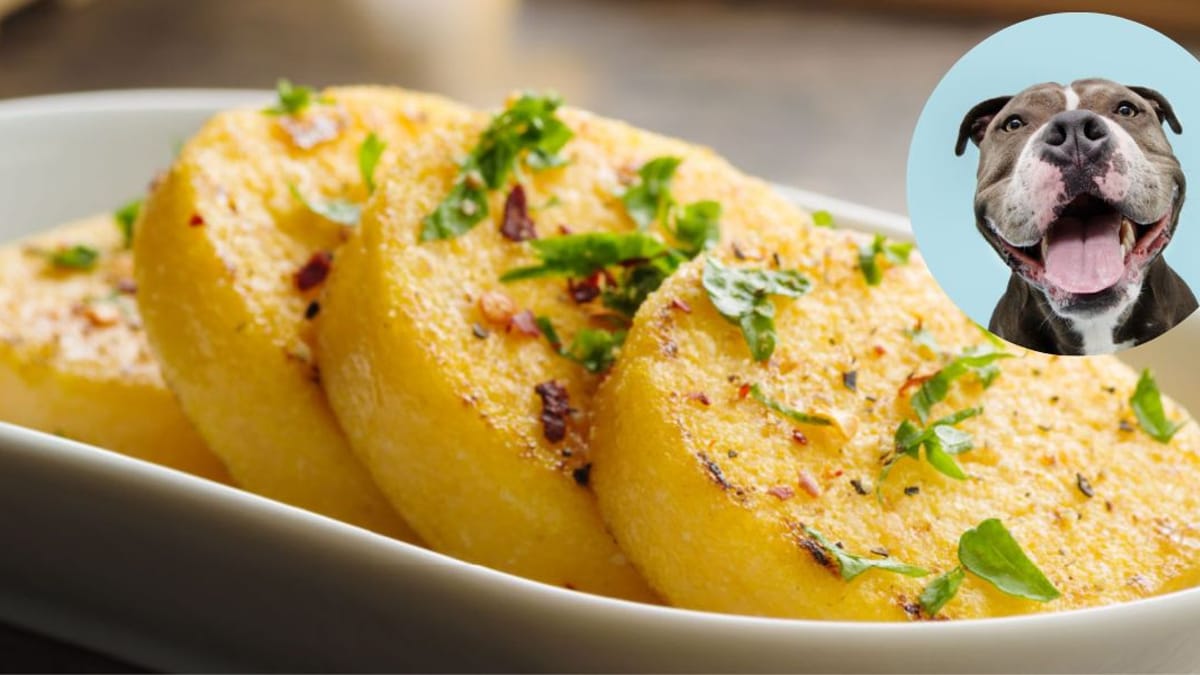give the polenta for dogs it’s possible? There are hundreds of traditional Italian dishes which, traveling the boot from north to south, can be shared with our dogs.
Sharing is certainly an act of benevolence and affection which, however, must be done with knowledge of the facts, especially when it comes to nutrition.
Is polenta good for dogs?
Feeding polenta to dogs has sides positive e from negatives. Very often the food on our tables can significantly improve the health of our pets, or drastically worsen it. The truth lies in the middle.
A complete dish, such as polenta, has few ingredients but a rich variety of nutritional constituents. Understanding which ones are good for Fido and which ones aren’t will give us the necessary basis to be able to reject or promote a food.
The nutritional elements of polenta
The main constituent of polenta is corn. This cereal contains innumerable nutrients essential to the well-being of those who consume them, among these we mention:
- potassium;
- football;
- magnesium;
- phosphorus;
- sodium;
- ferro;
- selenium.
It also has a high content in vitaminsspecifically those of group A and some of group B.
The “harmful” elements of polenta
The percentages of the constituents of corn (and therefore of polenta) give us important nutritional information: corn has 2 g of fiber, 9.2 g of protein and 3.8 g of lipids.
However, Fido’s number one enemy is only one: the starch. In fact, there is a large amount of this carbohydrate often not recommended in diets in high doses.
Can dogs eat polenta?
The answer is yes, it is possible to give polenta to dogs. When we decide to give our dog food, one trick above all will allow us to avoid trouble: the quantity.
It is known that too much cripples and, with polenta in the middle, we just have to dose the administration in the best possible way. Sometimes it happens that due to an excess of generosity, or due to Fido’s kleptomania, we give our dog too much food, what happens with polenta?
The biochemistry of carbohydrates
As repeatedly repeated, cornmeal is the main ingredient of polenta and, due to its constitution, has high quantities of carbohydrates.
Complex carbohydrates are further divided into starches and fibers and are digested more slowly than simple carbohydrates.
Starches must be broken down by enzymes produced by the pancreas and intestinal walls before being absorbed and used by the dog.
The glycemic index (GI) is the rate at which carbohydrates are absorbed into the bloodstream and, in general, is lower for foods that contain complex carbohydrates. This means starches are harder to digest and metabolize.
Proteins and carbohydrates, why balance them?
Carbohydrates are an excellent source of energy for the body, the optimal levels of digestible carbohydrates in the diet serve to avoid that the proteins contained in the diet are used as an energy source.
Proteins, in fact, above all have a structural function, in short, they are the “building blocks” of the dog’s body, a function that only proteins have, not other energy sources (such as fats and carbohydrates).
How much to give polenta to dogs?
Giving the dog some polenta must be understood as asporadic exception. This means that we can administer it as a reward or as a gift to give to our four-legged friend.
Certainly the quantity of polenta that can be given to the dog is subject-specific: it depends on the subject’s health.
Is polenta bad for dogs?
A cornerstone of pet nutrition is digestibility. All industrial diets (dry or wet) aim for a succulent composition, digestiblenutritious and hypoallergenic.
When drawing up a food plan for a dog, it will be necessary to direct the work primarily on the basis of the health of the gastrointestinal tract. Evaluating whether there are any allergies, intolerances or pathologies attributable to the stomach and intestines is the first step to take.
If Fido has one of these problems, it will be better to avoid polenta and rely on a balanced industrial diet on veterinary advice.
Give the dog some polenta as a purge
Polenta for dogs certainly cannot be defined as a purge, but it certainly helps digestion. If our four-legged friend doesn’t suffer from particular digestive disorders, apart from a slight constipation, polenta can be right for us!
Served cold, not fried and in minimal quantities, polenta can help intestinal peristalsis by cleaning the lumen of the organ from bone splinters and intestinal mucus.
Polenta is good for the dog only if it is well dosed
When choosing a homemade diet, the owner must pay particular attention to foods that are toxic to the dog dosing all the others with logic, reason and with the help of the veterinarian.
Saying “polenta is bad for dogs” is wrong, but it is often a topic of discussion at clinics in consultations with food specialists.
Polenta cooked for dogs is a beneficial food in the absence of pathology.
After all, polenta is a low-calorie dish and this should reassure enthusiasts who, in tasting it, want to share this Italian excellence with their dog in the shadow of the Alps.

